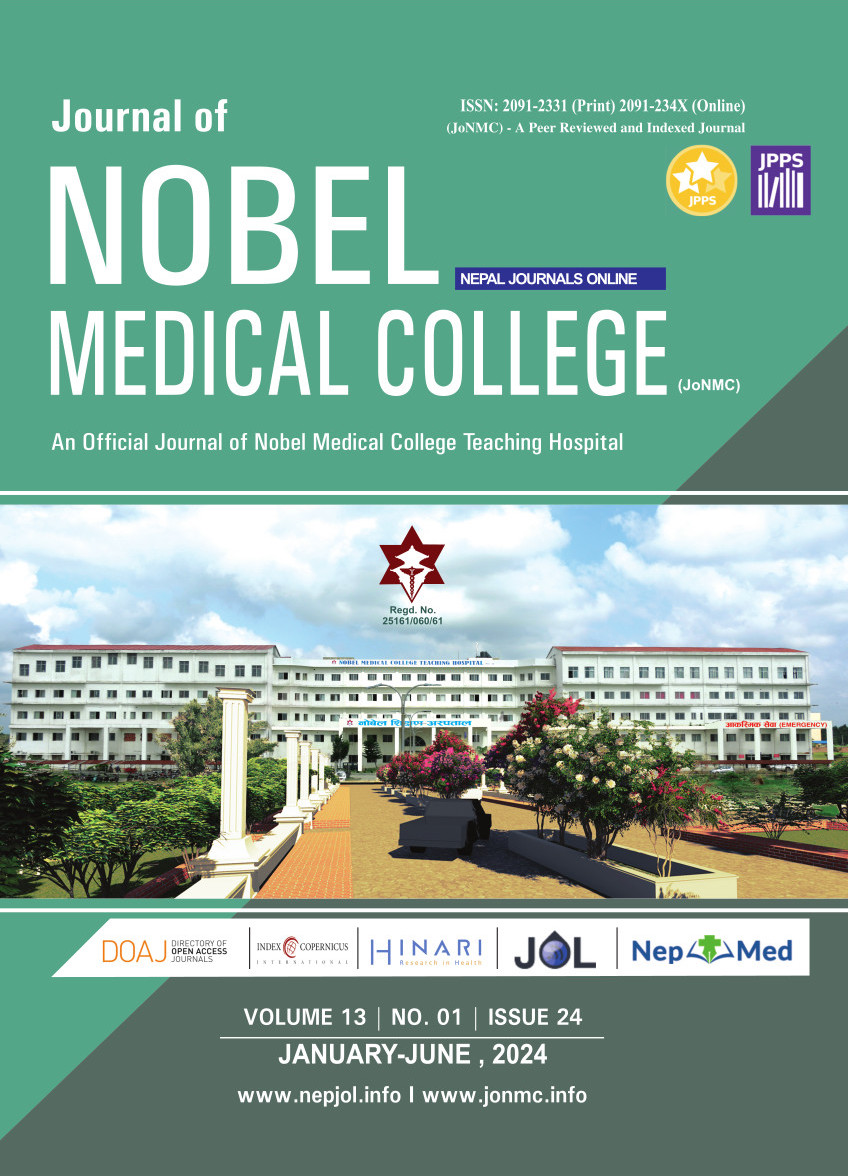Study of Pattern and Management of Abdominal Trauma Patients at a University Hospital of Nepal
DOI:
https://doi.org/10.3126/jonmc.v13i1.68014Keywords:
Abdominal injuries, Accidents, Liver, Retrospective study, SpleenAbstract
Background: Injury related death is a leading cause of death globally. Abdominal injuries may occur in up to one third of patients with trauma. Road traffic accidents have become the commonest mechanism of trauma.
Materials and Methods: This was a hospital based retrospective descriptive study conducted at Dhulikhel Hospital-Kathmandu University Hospital. Patients admitted with abdominal trauma from July 2021 to December 2023 were included in this study.
Results: This study included 60 patients with abdominal trauma. Mean age of patients was 35.60 ± 15.81 (10-76) years. Majority of patients belonged to age group 21-40 years (n=32, 53.3%) with male predominance (Male:female ratio=3.6:1). Blunt abdominal trauma (n=58, 96.7%) was more common than penetrating abdominal trauma (n=2, 3.3%). Road traffic accident (n=31, 51.7%), fall from height (n=22, 36.7%) and physical assaults (n=7, 11.7%) were the mechanisms of injury. In our study, commonly injured organs were spleen(n=19, 30.64%), liver(n=15, 24.19%) and small bowel(n=14, 22.58%). Among the patients with penetrating abdominal trauma, one patient had rectal injury and next patient had stab injury with protruding omentum through the wound. Thirty four patients (56.7%) were managed conservatively and 26 patients (43.3%) underwent operative management. The mortality rate was 8.33% (n=5) of which 4 (80%) had undergone operative management and 1 (20%) was being managed conservatively.
Conclusion: Majority of patients with solid organ injury can be managed conservatively while hollow viscus injury undergoes operative treatment. Physically active male population is the most affected group. Road traffic accidents are the leading cause of abdominal trauma followed by fall from height and physical assaults.
Downloads
Downloads
Published
How to Cite
Issue
Section
License

This work is licensed under a Creative Commons Attribution 4.0 International License.
JoNMC applies the Creative Commons Attribution (CC BY) license to works we publish. Under this license, authors retain ownership of the copyright for their content, but they allow anyone to download, reuse, reprint, modify, distribute and/or copy the content as long as the original authors and source are cited.




